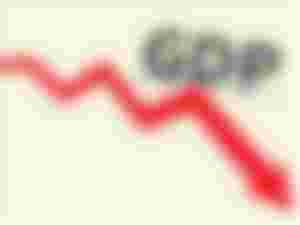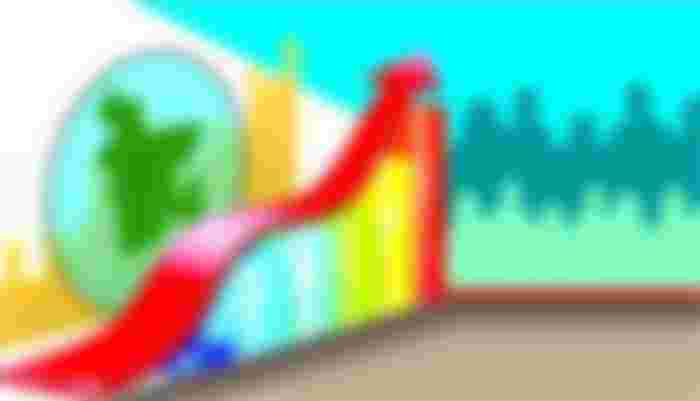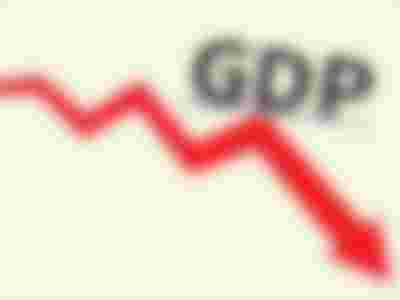The growth scene has been found after assessing the nature of the economy in the first nine months of the last fiscal year. As such, the effects of Covid-19 have not entirely been reflected in the report
#Even though investment in the fiscal year 2019-2020 rose by 10.63 percent year-on-year, the country's Gross Domestic Product (GDP) growth has slowed to 5.24 percent – the weakest rate in the last 18 years.
Moreover, consumption and savings grew by 9.5 percent and 12 percent respectively during the period.
The Bangladesh Bureau of Statistics (BBS) came up with these details in its periodic report on Monday.

The lowest growth that the country saw the last time was in fiscal year 2001-2002, which was 4.36 percent, according to data from the BBS.
GDP growth was 8.15 percent in FY19, 7.86 percent in FY18 and 7.28 percent in FY17.
The growth scene has been found after assessing the nature of the economy in the first nine months of the last fiscal year. Therefore, the effects of Covid-19 have not entirely been reflected in the report, BBS officials said.
Economists fear the growth rate will fall further in the final calculation when economic losses between April and June are added to the report.
They said the data on the fall in GDP growth despite increased investments is not consistent.
They also think that there is a big discrepancy in the BBS data on different indices.
When contacted, Tajul Islam, director general of the BBS, told The Business Standard that the report had been prepared under its own management until March of the last fiscal year. There is no room to cast any doubt on the information in this report.
A final calculation will be made when information up to July is available. Then the growth rate either can increase or decrease, he added.

The BBS report found that growth in the industrial sector among the major sectors fell by almost half from 12.67 percent to 6.48 percent in the last fiscal year.
The service sector's growth also slowed to 5.32 percent from 6.78 percent and agriculture saw a 3.11 percent decline from 3.92 percent in FY19.
The manufacturing sector dropped to 5.84 percent from 14.20 percent in the previous fiscal year.
According to the BBS, the market value of GDP stood at Tk27,96,378.2 crore in the last fiscal year. Agriculture contributed 13.02 percent, industry 31.13 percent and services 55.86 percent.
According to the report, for the first time, the country's per capita income (GNI) has increased by 8.12 percent to $2,064, which is equivalent to Tk1,74,888.
Per capita income was $1,909 in FY19 and $1,751 in FY18.
The public and private sectors together invested Tk887,988 crore in the last fiscal year, according to the BBS, which is 10.63 percent higher than that in the previous fiscal year.
A total of 31.75 percent of GDP has been invested – the highest in the history of the country. In FY20, private investment grew to 23.63 percent from 23.54 percent in FY19, while public investment rose to 8.12 percent from 8.03 percent.
Savings rose by 12.26 percent to Tk8,419,65.1 crore. In the last fiscal year, Gross National Savings increased from 29.50 percent of the GDP to 30.11 percent. This rate of savings is also the highest in history.
Economists and analysts have found several inconsistencies in the BBS data.
Dr Zahid Hussain, former lead economist at the World Bank's Dhaka office, told The Business Standard that the BBS would not be able to justify the publication of the growth report in August with data up to March when data for the major indicators are available up to the last month of the fiscal year.
Citing an example, he said large- and medium-scale manufacturers grew by 5.47 percent last year but real exports declined by above 12 percent.
He said about 95 percent output of those factories usually goes to exports. Revenue for steel, cement and fast-moving consumer items also declined. There is no symptom of a positive growth in the sector.
He also dismissed the information relating to using 6.6 percent negative growth in the import of intermediate goods. "Import of raw materials decreased but the production increased. I am unable to find how the issue will be manifested in reality," he said.
Noting that the service sector had been affected most by Covid-19, he also cast doubts on the sector's 5.32 percent growth.
He said a large segment of employees in the informal sector had returned to their village homes as all hotels, restaurants, salons and others were forced to shut their businesses.

Professor Dr Mustafizur Rahman, distinguished fellow at the Centre for Policy Dialogue, told The Business Standard that the 31.75 percent investment ratio to GDP was not reliable. The finance ministry revised down investment to 20.8 percent of the GDP. How could it increase by 10.95 percent of the target?" he questioned.
He said the ministry revised the private sector investment target to 12.7 percent, but the BBS found it to be 23.63 percent of GDP.
The economist said the situation of import and export, investment and private sector credit growth had been worsening even before the Covid-19 outbreak. Only remittances were on the right track. Covid-19 had worsened the situation and that was why the growth rate would decline after the final calculation.
Dr Selim Raihan, executive director at the South Asian Network on Economic Modelling, told The Business Standard that the BBS found all the indicators to be on the right track but only growth had declined, which implies that the data have no consistency.
According to BBS sources, 8.15 percent GDP growth was achieved in the 2018-19 fiscal year and so the target for the last financial year was set at 8.20 percent.
However, the CPD had projected a 2.5 percent growth at the end of the fiscal year. The World Bank had forecast 1.6 percent growth. The IMF had predicted that growth in Bangladesh would slow down like in other countries.
The government also reduced the target from 8.2 percent to 5.2 percent.
Meanwhile, the Finance Minister at a meeting on Tuesday expressed his satisfaction over the 5.24 percent GDP growth and the country's per capita income reaching $2064.


